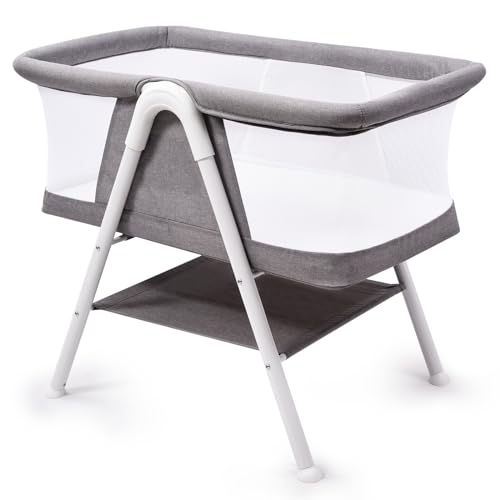10 Things We Are Hating About Cots For Tots
Cots for Tots: A Comprehensive Guide to Choosing the Right Crib for Your Baby
When it comes to preparing for a new arrival, few purchases are as crucial as selecting the right cot for your infant. Not just does a crib provide a safe sleeping environment, but it also plays a vital role in your baby's development. This article intends to direct parents through the different aspects of choosing a cot, ensuring that they make an informed decision that satisfies their kid's needs.
Understanding the Importance of a Safe Sleeping Environment
The American Academy of Pediatrics (AAP) stresses that a safe sleep environment is a considerable aspect in decreasing the threat of Sudden Infant Death Syndrome (SIDS). An appropriately picked cot can supply the safety, comfort, and essential support for a growing baby. Here are several bottom lines that highlight the significance of picking the best cot:
- Safety Standards: The cot must adhere to safety guidelines to prevent risks.
- Convenience: Babies require a comfortable sleeping surface to promote quality sleep.
- Development Support: The best design can assist in healthy physical development.
Secret Features to Consider When Choosing a Cot
When choosing a cot, parents ought to examine various functions to make sure that the choice aligns with their baby's developmental requirements. Below are some vital factors to think about:
1. Safety Standards
- Product: Look for cots made from non-toxic products and surfaces.
- Design: Ensure there are no sharp edges or extending parts.
- Certification: Check for compliance with safety ratings.
2. Size and Design
- Dimensions: Cots can be found in standard sizes. Ensure it fits your nursery.
- Adjustable Mattress Heights: Cots with adjustable heights can accommodate your growing baby and promote easier access.
- Mobility: Consider whether you need a mobile choice that can be easily moved.
3. Design and Aesthetic
- Style Preferences: Choose a cot that complements your home decoration.
- Colors and Finishes: Various choices are offered to suit your taste.
4. Price and Quality
- Spending plan: Determine your budget beforehand to narrow options.
- Sturdiness: Invest in a tough cot that can last through several children, if needed.
5. Brand Reputation
- Evaluations: Look for feedback from other moms and dads.
- Warranty: A great service warranty can be indicative of the maker's confidence in their item.
Types of Cots Available
When checking out cots for babies, moms and dads will come across various options tailored to various needs and choices. Here are the most typical types of cots:
Type of Cot
Description
Requirement Crib
The conventional crib with a fixed style, suitable for babies to toddlers.
Convertible Crib
A versatile choice that transforms into a young child bed, daybed, or full-sized bed.
Portable Crib
Developed for simple transportation, ideal for travel or little areas.
Mini Crib
A compact variation of basic cribs, perfect for homes or limited areas.
Bassinet
A small, portable sleeping space for babies, often used for the first few months.
Best Practices for Cot Setting and Maintenance
When the right cot is selected, it is essential to set it up correctly and keep it to ensure safety for your baby. Here are some best practices:
- Location: Place the cot away from windows, cables, and other threats.
- Bed linen: Use a company bed mattress with a fitted sheet and prevent pillows, blankets, or stuffed animals.
- Regular Checks: Inspect the cot routinely for loose parts or wear and tear.
- Avoid Bumper Pads: While numerous parents find them aesthetically appealing, they can present suffocation threats.
FAQs About Cots for Tots
1. What is the most safe type of cot for babies?
The most safe type is a basic crib that satisfies security standards from organizations such as the CPSC. Try to find features like fixed sides and a firm mattress.
2. When can I move my baby to a toddler bed?
Generally, kids can move to a toddler bed around the age of 2 to 3 years, but it's necessary to assess your kid's readiness based upon their size and capability to climb up out of the crib.
3. How frequently should Cot Sales inspect my baby's cot?
Examine the cot every couple of weeks to ensure all screws are tight, and there are no indications of wear or harmed parts.
4. Are convertible cribs worth the financial investment?
Convertible cribs can be a great financial investment as they adjust to your kid's development and can last for numerous years, potentially saving money in the long run.
5. What's the very best mattress type for a cot?
A premium foam or innerspring mattress that fits comfortably within the crib frame is recommended to make sure safety and convenience.
Picking the right cot is a crucial decision for new parents, impacting both the security and wellness of their baby. With various options offered, understanding the features, types, and best practices can make this selection process much easier. By doing thorough research and thinking about the essential elements laid out in this short article, parents can make sure a safe, comfortable, and aesthetically pleasing sleeping arrangement for their kid. Investing time in this option not only sets the stage for safe sleep but also supports the baby's development throughout those essential early months.
